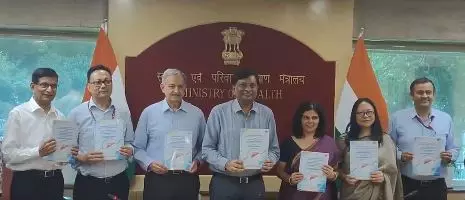1-3 out of 10 people beng diagnosed with non-alcoholic fatty liver disease: Health Secretary

Hyderabad: With non-alcoholic fatty liver disease (NAFLD) increasingly becoming a major public health concern, the Union health ministry has released revised operational guidelines and training modules for healthcare workers on Friday. It is being closely linked with metabolic disorders such as obesity, diabetes and cardiovascular diseases and a major non-communicable disease (NCD),
Apurva Chandra, Union health secretary said, “One to three people out of 10 can have NAFLD, which highlights the impact of the disease.”
The ministry pointed out that NCDs were accounting for more than 66 per cent of deaths in the country. NCDs are strongly associated and causally linked with major behavioural risk factors such as tobacco use (both smoking and smokeless), alcohol use, poor dietary habits, insufficient physical activity, and air pollution.
India contributes high numbers for NCDs globally and one of the core causes of metabolic diseases is in liver. NAFLD is emerging as an important cause of liver disease in India-- almost a silent epidemic with community prevalence from 9 per cent to 32 per cent, depending on age, gender, area of residence and socioeconomic status.
The revised guidelines focus on health promotion and early detection for ensuring that patients with NAFLD receive timely and appropriate care. It also advocates for a multidisciplinary approach, integrating the efforts of healthcare providers from various disciplines to offer a holistic care to individual affected by NAFLD.
The training module complements the operational guidelines and builds capacity of healthcare professionals to identify, manage and prevent NAFLD particularly at the primary level. The module covers a wide range of topic including epidemiology, risk factors, screening, diagnostic protocol and standardised treatment guidelines. It also reinforces the importance of early detection, patient education, lifestyle modification and integrated care strategies to improve health outcomes.

